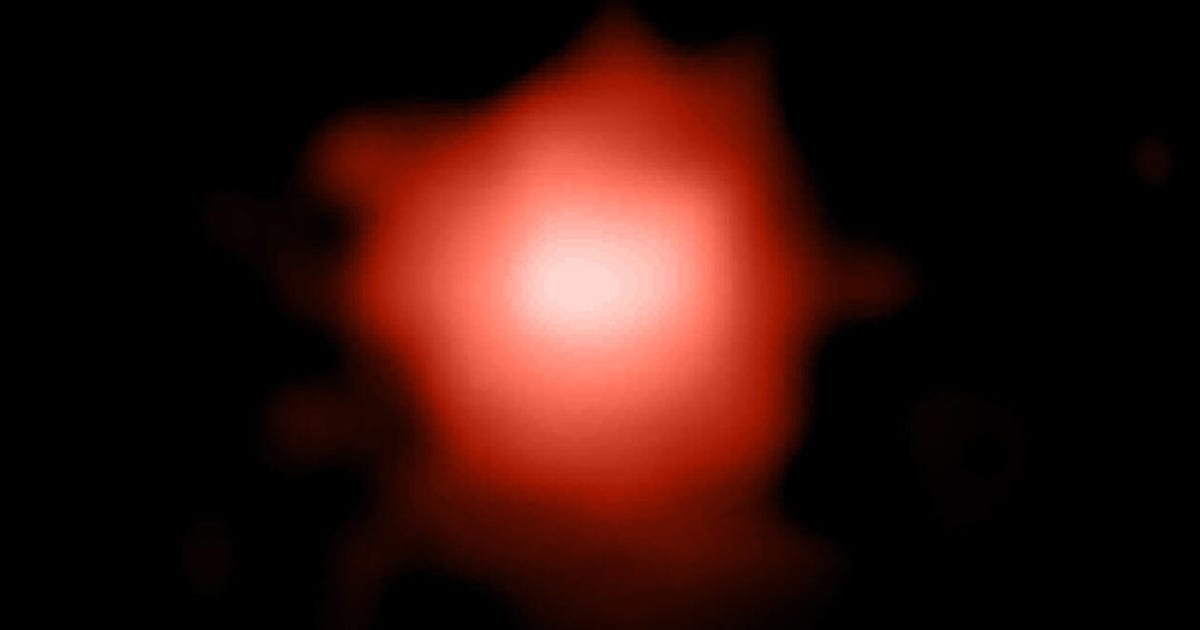
If you've been following the astronomy community on Twitter or, perhaps, Captain America himself, you've likely come across a story about the James Webb Space Telescope's latest find: the "oldest galaxy we've ever seen."
This is exactly what we were promised from the James Webb Space Telescope. Only a week ago, the world's collective jaw hit the floor when the first stunning images were revealed. Now the telescope is getting a proper start on its myriad science programs, but researchers have already had access to a ton of data collected during JWST's commissioning phase and released early to researchers across the globe.
That's how we ended up finding "the oldest galaxy" so quickly. Scientists pored through a particular dataset looking for far-off galaxies and found a candidate they've dubbed GL-z13, a call-back to the current confirmed record holder, GNz11.
There's more work to be done to confirm GL-z13 is actually the new record holder – some of which will require more time pointing Webb at the galaxy – but even so, several publications have already crowned this galaxy the universal champion.
So how did we get here? And is this "the oldest galaxy" ever seen?
Over the last 24 hours, two different research groups uploaded papers (one here, the other here) to arXiv detailing their search for very distant galaxies in the James Webb data.
The website "arXiv" (I pronounce it "ark-siv" because I am a heathen, but others assure me it's pronounced "archive") is a preprint repository, a place for scientists to drop studies so they can be quickly disseminated to peers. It's a great place to quickly get new research out into the world, particularly for astronomy and astrophysics, with the caveat being that the findings have not typically been peer-reviewed – an important checkpoint for validating the study and its methods.
Hubble and James Webb Space Telescope Images Compared: See the Difference
See all photosI don't want to poop the party for GL-z13, but I do want to exercise just a teensy bit of caution. In communicating findings with such certainty, there's potential for readers to lose trust in scientists if it turns out GL-z13 is something else entirely. Several astronomers I spoke with believe the data is quite compelling and the galaxy likely does reside a long (loooong) way away, but until there's confirmation, GL-z13 can't take the title of "oldest galaxy."
And to some, even that title itself is a bit misleading.
You see, GL-Z13 isn't really "the oldest galaxy ever" – it comes from a time when the universe was barely 330 million years old. The light from that galaxy? Well, yes, it's super old. It has traveled a long time to reach the JWST. But the galaxy itself, if confirmed, is probably the youngest galaxy ever seen, according to Nick Seymour, an astrophysicist at Curtin University in Western Australia.
"At 330 million years after the Big Bang, it can't be more than 100 million years old at best," Seymour said. "Hence, this really is a baby galaxy at the dawn of time."
Getting excited about record-breaking space feats is a given. As a science journalist, I do this practically every day. But in reporting on new discoveries, it's important to convey uncertainty. In headlines, in social posts, in the way we discuss scientific progress. We have to set the correct benchmark and leave in that uncertainty. The tale of GL-z13 is a wonderful one, and it's only just beginning. Astronomers now have to study it a whole lot more to make sure the distances are correct.
"There's obviously a lot of follow-up work to do, but it really is sort of a glimpse of where things are going with James Webb," said Michael Brown, an astrophysicist at Monash University.
It was only in April, before Webb was scouring the cosmos, that astronomers announced they may have discovered the most distant galaxy yet, HD1. That galaxy is believed to be from a time when the universe was about 330 million years old. Brown noted at the time it was worth being cautious about handing over the title to HD1 because the data might point to a galaxy billions of light-years closer to Earth. To confirm its distance, just like with GL-z13, we need more observations.
Know what telescope might be able to do that? You guessed it: JWST.
We're fascinated by records being broken, but perhaps the most interesting point from all of this is that if Webb works as well as expected (and it seems to work better than even scientists dreamed), the title for "oldest galaxy" will change hands as much as WWE's 24/7 Hardcore Championship. We'll be finding new galaxies from even further back in time at a pace we couldn't dream of.
If that's the case, I expect it won't be too long before the record tumbles.
Updated July 22: Headline changed, added context to oldest galaxy paragraph.
https://news.google.com/__i/rss/rd/articles/CBMiZ2h0dHBzOi8vd3d3LmNuZXQuY29tL3NjaWVuY2Uvc3BhY2Uvbm8tdGhlLWphbWVzLXdlYmItc3BhY2UtdGVsZXNjb3BlLWRpZG50LWZpbmQtdGhlLW9sZGVzdC1nYWxheHktZXZlci_SAQA?oc=5
2022-07-21 23:48:33Z
1501524035
Tidak ada komentar:
Posting Komentar